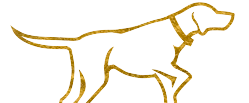Your Cart is Empty
{# PADRE SIN ENLACE #} Electronic Collars
{# PADRE SIN ENLACE #} Collars and Leads
{# PADRE SIN ENLACE #} Dog Tracking Systems
{# PADRE SIN ENLACE #} Dog Training
{# PADRE SIN ENLACE #} Bird Launchers
{# PADRE SIN ENLACE #} Hunting Dog Supplies
{# PADRE SIN ENLACE #} For The Hunter
Shed Hunting Training - Phase 2
January 21, 2021 3 min read 2 Comments

In Phase 1 of shed hunting training, I covered the essential steps to get your dog on their way to finding antler sheds. In Phase 2, I’ll explain how to take your dog’s training to the next level—using not only their sharp eyes but also their keen sense of smell to find sheds.
For this phase, we will continue to use the Shed Hunting Antler Retriever Training Kit from Dog Bone. This kit has been key in both Phase 1 and Phase 2 training. The included training antler is great for familiarizing dogs with the size and weight of a real antler, while being durable enough to handle repetitive throws and retrieves.

Antler Training Scent by Dog Bone
To begin Phase 2, apply an antler scent to your training dummy. You can use the training scent that came with the kit—either Shed Hunting Antler Scent by Dog Bone or Rack Wax by Dokken. The goal of this phase is to get your dog to rely more on their sense of smell to locate antlers. Once your dummy is properly scented, start with simple retrieves, just as you did towards the end of Phase 1. This will help your dog get back on task and ready for the next steps.
Increasing Difficulty: Using Smell and Sight
Once your dog is warmed up and ready, find an area where they’ll lose sight of the dummy after it’s thrown. Ideal areas include tall grass, brush, or even a cornfield. Have your dog heel, then throw the dummy into the cover. Let your dog watch where the dummy lands, but do not let them retrieve it right away. After the dummy lands, send your dog for the retrieve.
If your dog won’t hold until the dummy lands, use a check cord or stake-out to keep them in place. This will encourage your dog to rely on their sense of smell and sight while still knowing the general direction where the antler is located. At first, don't make this step too difficult—gradually increase the challenge as your dog gets more proficient. This will help prevent frustration and keep them engaged.
Advancing the Training
As your dog begins to successfully find the antler dummy, start increasing the difficulty level. You should notice your dog becoming more confident and quicker at finding the dummy. Once your dog is finding the dummy with ease, it's time to make the training more realistic.
Place your dog inside or in a kennel where they can’t see you. Then, plant the antler dummy in the field where they can’t see it. Be sure to apply a fresh layer of training scent to the dummy before hiding it in the high grass or brush. Once the dummy is hidden, go back and get your dog. Lead them in the general direction of the dummy. By now, your dog should be keen to the antler scent and able to sniff out the dummy.
As your dog masters this, continue to increase the difficulty by hiding the dummy under leaves, behind downed trees, or in sparse grass and weeds. To make things even more challenging, use the brown shed hunting antler dummy (sold separately). This will force your dog to rely more on their sense of smell, as the brown dummy is harder to see.

Conclusion: Phase 2 Complete
Congratulations, you’ve now completed Phase 2 of your shed hunting training! Your dog is now well on their way to becoming a successful shed hunter, using both their sight and scent to locate antlers.
Now you’ve made it through Phase 2 of shed hunt training—how have your results been? Let us know in the comments below!
Want to learn more about the Shed Hunting Antler Retriever Training Kit I used? Check out my full review here: Shed Hunting Antler Retriever Training Kit Review.
2 Responses
Scott Bennett
February 14, 2021
I am wondering where to find Phase 3 training tip that was mentioned to be available a week after Phase 2.
Phase 1 and 2 were very helpful and I would love to hear any other information before I begin.
Please advise.
Thank you,
Scott
Leave a comment
Comments will be approved before showing up.
Subscribe
Sign up to get the latest on sales, new releases and more …
Featured Products

Subscribe
Sign up to get the latest on sales, new releases and more …
Lion Country Supply — Trusted Hunting Dog Supply Store Since 1974 | Over 50 Years Serving Bird Dog Owners





Ronald
July 31, 2024
I’m still waiting for phase 3 of the shed hunting instruction. Thank you very much for phase 1 and two